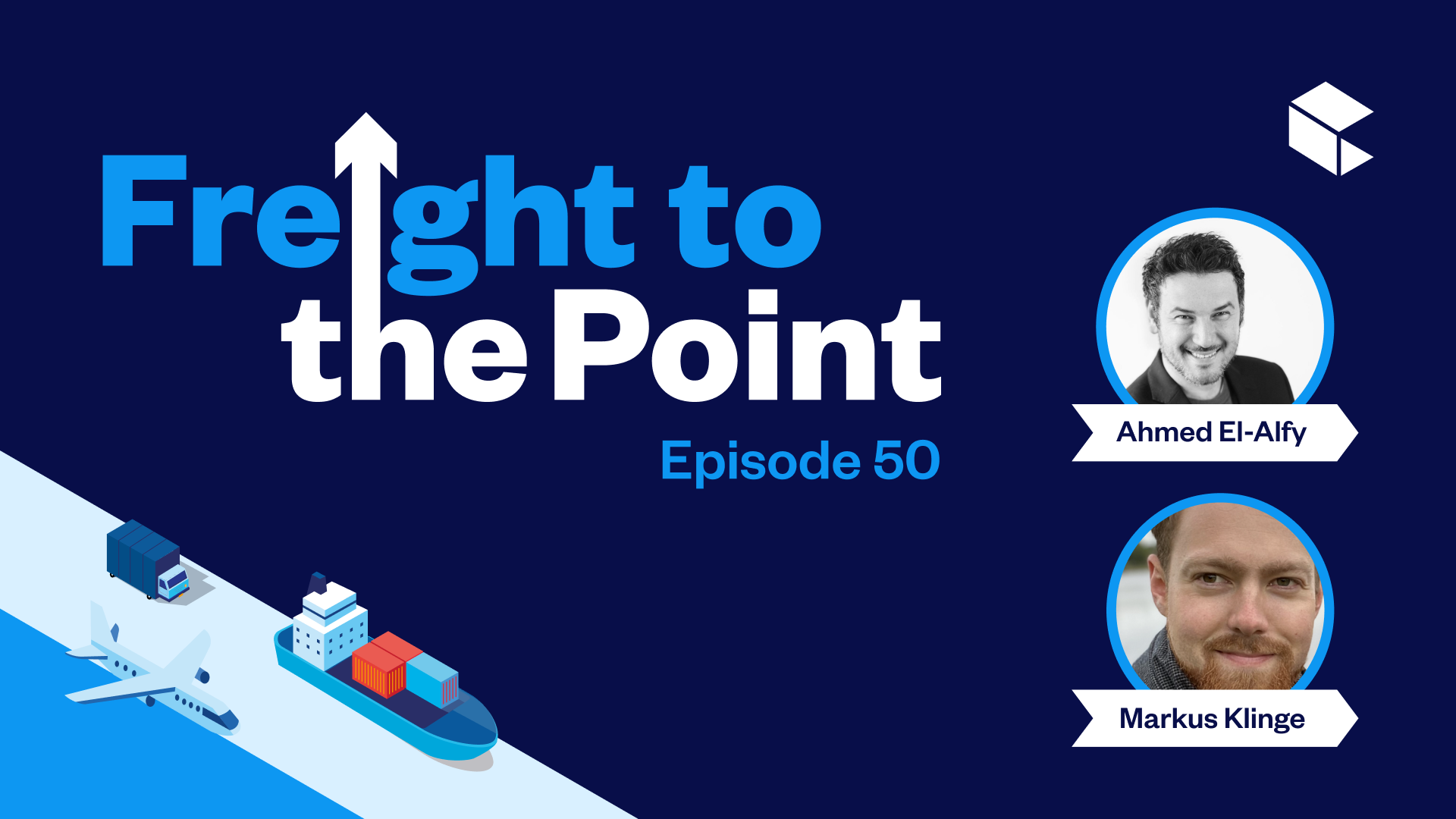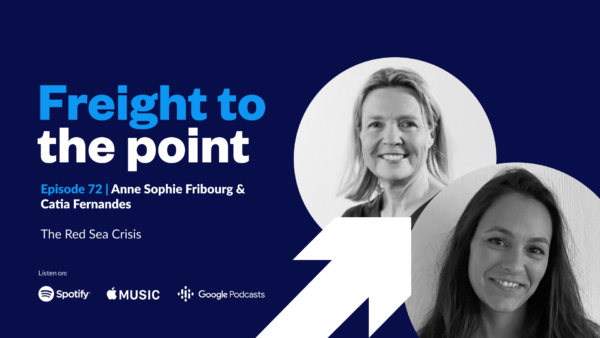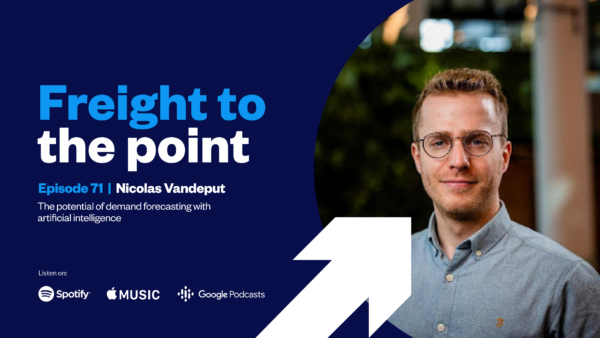Episode 50:
Coping with labour shortages in 2023
See all episodes

“You can never completely avoid it. There will always be supply chain disruptions.”
Even though China has lifted its zero-Covid policy which had a huge impact on labour shortages in the supply chain, it’s not over yet.
With demonstrations in France and port disruption in Europe and the US, labour shortages are still impacting the supply chain industry.
So how do you navigate it?
Join Ahmed El-Alfy, Strategic Account Manager at Zencargo and Markus Klinge Knudson, Operations Manager at Zencargo as they talk about the ongoing labour shortages that are affecting our supply chains.
They discuss:
- How shippers had to navigate around port strikes such as Felixstowe.
- The impacts labour shortages have on shippers.
- How shippers should be working with their freight forwarding partners to build contingency plans.
Ahmed El-Alfy (Alfy)
With nearly 20 years of experience in the supply chain industry, Alfy has an extensive background in supply chain, transportation management, change management and logistics. Alfy is dedicated to working with customers to ensure supply chains are optimised to create a competitive advantage for their businesses.
Markus Klinge
Markus is an Operations Manager at Zencargo and has been in the supply chain industry for nearly 10 years. Markus manages Zencargo’s global freight service delivery teams and leads on global account implementations to ensure that goods are shipped efficiently around the world.
Resources
Never-ending disruption: how should you tackle it?
Lockdowns in China: questions to ask yourself to prepare for supply chain disruption
Hello, and welcome to another episode of Freight to the Point. My name is Alfy, and I’m the strategic account manager at Zencargo, and today, I’m joined by Markus Klinge, operations manager at Zencargo. Over the past few years, we have witnessed labor shortages across the supply chain. From COVID lockdowns in China, reducing the workforce in factories, ports, airports, and trucking services, to industrial action across Europe. So we have witnessed a lot. So the question that still gets thrown around is how do we avoid this disruption in this supply chain? Shippers are still being left in the dark, as manual processes and lack of visibility prevent them from making contingency plans to swerve these disruptions. Therefore, in this episode, Marcus and I will be discussing strategies shippers can take to mitigate the impacts in the supply chain, the tools they should be using, and how they should be collaborating with their supply chain partners. Welcome, Marcus. Do you want to give a bit of an intro to yourself?
Markus Klinge:
Sure. Hi, Alfy. Thanks for having me. Nice to be here. My name is Markus. I’ve been with Zencargo for about a year and a half, but worked in freight forwarding for about, well, pushing a decade now, even though maybe it doesn’t quite show, but I’m pleased to be here, and look forward to exploring this topic with you.
Ahmed El-Alfy:
Thank you so much, Marcus. I mean, obviously, there is a lot of things that we want to cover today. So the first thing, really, is understanding the labour shortages, right? So we talk a lot about labour shortages, and we see all of these strikes, obviously, happening even outside the supply chain in the country. So let’s first let the audience know why there have been labour shortages in the supply chains from the first place.
Markus Klinge:
Sure. Okay. So to understand labour shortages, you need to look around what’s happening on a macroeconomic level. So we see in Europe, especially, so in UK, France, and Germany, we see a lot of strikes due to the cost of living, a lot of strikes due to working conditions in the port and terminals, et cetera, and that has a massive impact, because all of these points or ports, airports, they are massively important infrastructure points. So they’re happening around the world, and they’re happening a lot more recently off the back of their last two, three years we’ve had of COVID. COVID, on the other hand, has been a massive disruptor. There’s nobody in supply chain who has not felt the impact in some way or another. Obviously, the big impact during COVID was all of the lockdowns we saw globally.
We saw China with a zero COVID policy, where there was just complete closure of massive regions of the country. We saw shutdowns and delays of vessels, and ports, and departures. For those that have been particularly trading into the US, they will have seen that there is almost 100 vessels piled up outside some of the ports waiting to dock, and that would’ve had an impact for all of the importers into the US. So there’s a mixture, but in particular, over the last couple of years, of course, we’ve been impacted by all the COVID restrictions, and, in more recent times, we were impacted by the strikes, especially in Europe.
Ahmed El-Alfy:
So I mean, how does that impact supply chains if we really put it in a literal sense, in your opinion?
Markus Klinge:
The impact is quite broad, because obviously, all these products, they’re either finished products or they’re raw materials. So at a basic level, it impacts productivity, because the importers won’t be able to produce their final products. It might also impact their sales forecasting and their actual sales. We see a lot of E-commerce businesses or retailers where there’s a big difference in terms of their customers when they buy and how they buy. So if something is immediately available for dispatch, so you see when you are online, it’ll say it’s in stock or it’s out of stock. There’s a big difference for whether somebody actually chooses to buy that product. If they see it’s in stock and it’s available for dispatch delivery within 24 hours, 48 hours. There’s a much higher likelihood they’ll buy that, as opposed to not in stock or coming soon. So it has a big impact on customers’ stock availability to sell, and that’s a big impact on their sales forecasting and overall productivity if they’re importing raw materials.
Ahmed El-Alfy:
Well, I mean, it is interesting how things evolve, right? So we’re seeing some positivity across the line, and we’re seeing now, with COVID, obviously, it has been impacting us all for a long time, and now China is really lifting their zero COVID policy finally, which was a big factor in that labour shortages in the supply chain, but so what’s next? Where should we be looking for a disruption because of labour?
Markus Klinge:
If I had a crystal ball, it would probably be very successful, but I think the most important thing, is for manufacturers to work for importers export is that you can’t completely avoid it, there will always be supply chain disruptions, but what we’re seeing a lot more focus on now is planning for it and planning for exception and exceptions management. So what’s next in terms of that is we’re seeing a lot more customers where they look into having a more robust supply chain that doesn’t rely on a single point failure.
We’ve seen that a lot of customers, especially that we’ve been dealing with, where we’ve always worked under the assumption that ships are going to run, they’re going to arrive on time, they’re going to depart every Thursday, every week, and that’s just how it is, but I think there has been a lot of change in mentality for customers, shippers, manufacturers, alike, especially over the last couple of years. So what that means, in terms of for customers, manufacturers, is that they have to plan for these exceptions, and, unfortunately, they’re no longer just exceptions that they’re almost becoming the norm. Luckily, we’re in a stabilisation period now, but especially the last three years, there’s been a lot of exceptions that it’s almost hard to just call them exceptions.
Ahmed El-Alfy:
Yeah, no, absolutely. It has been a rule of course, though, right? I mean, as you say, it’s become the norm now. We kind of have to live with it, but then that leads us to the point of how can we recommend to the shippers, and I’ll ask the shippers, how can they navigate around that norm now?
Markus Klinge:
Sure. There’s a few different ways. Obviously, there’s always different approaches you can take into managing and safeguarding your supply chain, but a few things that we recommend, that we look at is when you’re planning your shipments, if you’re experiencing transit delays, you’re looking at, potentially, different ports. So, especially in the UK over the last couple of months, we’ve seen a lot of port closures, port shutdowns, strikes impacting Felixstowe, Liverpool in particular, and what we have seen and where we’ve had successes navigating cargo to other ports that were open. So usually, if you’re in the south of the UK, you would import into Felixstowe normally, but that was on strike for several weeks, so you might consider importing into Southampton instead or to another port. So that’s one option that you can look at.
Other options, especially in Europe is we can see now Germany is actually facing one of the worst crises and one of the worst strikes in well over a decade, and it’s got a massive impact on supply chain locally in the country. So what you can look at there is importing into another country and then transporting your cargo under a bond, so under a T1, where you can move it into Netherlands, for example, into Rotterdam, or into Antwerp. Also, and you can move cargo in T1s and get into Germany via truck, rather than into the port locally into Germany, because there might be disruptions impacting that. We’re seeing customers do a little bit of everything. At the end of the day, it’s about getting the cargo to you, not just in time, but also on budget, and when that’s not possible, you need to look at the next best alternative. So there’s a few things you can do, and especially in Europe, I think there’s options of looking into using different countries and moving on transit documents.
Ahmed El-Alfy:
It’s interesting to kind of look at all of these things, but when in theory, in practice, I mean, I remember joining Zencargo the first time, and there was a wave of strikes and congestions that happened at the ports, and I’d like to kind of give the listeners some examples of how, because I remember even your name popping up when I first joined the company with all these alerts and all these things that we’re doing. So it’s kind of interesting to share with us some examples of how we really navigated those problems across to the customers. Just really practical examples from your experience.
Markus Klinge:
Yeah, sure. So I think manufacturers, customers, shippers, importers, exporters, what they need to do and what they need to be better is asking their supply chain partner. How prepared are you for exceptions management? What does exceptions management look like for you specifically? In this case, it’s Santa Cargo, and what we’ve looked at for a lot of our customers is, A, making sure that they have visibility, because we know that visibility not only in the cargo that you have on the water that’s at origin, that’s about to arrive, or for delivery, that’s one part of visibility, but another part of visibility is also down to a skew and a PO level for things that’s not been produced yet or that’s on order. So what we’ve been able to do with customers is discuss with them and say, when we know that there’s delays, give them full visibility of how it’s impacting the shipments, but that’s only one part of the puzzle.
The other part is what do you actually do? To a certain extent, both the customers and as a freight forwarder, we are hindered, because it depends on where the vessel is. We can’t suddenly pull it forward, that’s not within our remit, but what we can look at is we can look at do we send replacement products, do we re-divert a…? If you have two containers, and the way one might be waiting in the trans-shipment port, can you move from that trans-shipment port into another where there’s no strike? We have done that in the past because of the visibility we have been able to give our customers is we’ve been able to look in on a PO level and say, “We can actually see that this particular skew and this product is about to be ready at origin. Do you want to air freight a smaller portion shipment to tie you over for that week or two weeks that we are experiencing that delay?” So there’s a few different ways that we’ve been able to help customers, but really, what it boils down to what is it we’ve done is we’ve given the visibility, and then we’ve been able to make quick decisions around how do we manage exceptions here and being able to give that data to the customer and have that discussion live, with the customer, we’ve been able to make decisions a lot quicker than having to go out to origin partners.
Ahmed El-Alfy:
Yeah, no, I think one of the things that really, really made an impact as well is kind of the analytics side of things, and I remember even when the congestion happened, immediately, there was a rollout of a dashboard in the analytics section that started off with Felixstowe, and then another one for Liverpool, and it kind of split by customer. It’s just amazing how it was turned around, and very quickly it happens. So one of the first things that I deal with customers as well is, the first thing is, am I impacted? If something happens, am I impacted? And if it’s impacted, what is the impact, and what’s the potential threat? How long will I be impacted? And all that is kind of important for the customers to understand and view, to be able to make decisions, and as you said, to offer different options and solutions to mitigate that risk.
Markus Klinge:
Absolutely. I think one other important thing, as well, is we, as a supply chain partner, understand that product needs to get to its final destination as soon as possible, and especially, we know when there’s disruptions, we need to be very communicative with our customers about how is this impacting them? Because we know, at the end of the day, they’ve got products to produce, or to sell, and we need to work with them in partnership to make that happen in the best way possible. So where we have seen success as well is especially the customers that are very engaging with Zencargo and with us as a supply chain partner with them, and they’re very engaging with us. They’re asking questions of us, they’re taking us to task. We know how important it is for them, and we want to make sure that we help them, and where we’ve seen a lot of success recently, especially over the strikes, is when we have that close communication with the customer to make sure that they get the best possible outcome on the challenging circumstances.
Ahmed El-Alfy:
Yeah. Yeah, absolutely, and again, communication is really important and kind of not being in the dark, and not knowing what’s happening. Obviously, there are the tools and the dashboards, but at the same time, there are always, as you know, you are the experts, and you’re getting those notifications, you read the news, and then kind of replicate, cascade that information to the customers so that the customers can also… They have their own internal stakeholders, which also, they ask the questions and they get that information from them. So we kind of agreed that the problems will always be a norm, right? So what would be your final recommendations or advice to the shippers and the customers to deal with this norm?
Markus Klinge:
Yeah, I think one last thing to mention as well is it’s important to analyse your supply chain at both ends and throughout the whole cycle. So when times are tough, and when we see strikes, where we see customers get priority in the local market is when it’s a known fact that they’re good with their suppliers in the sense that there are quick turnaround times at delivery, quick turnaround times at offloading. If we see that trailers, vehicles, especially in tough times, where they get stuck at a customer for 8, 10, 12 hours loading or offloading, those things happen, but if they become the norm more than the exception, we do see that those kind of loads are lowered down on the priority list because a driver might be able to do two or three loads in that time, and instead, he’s covered just that one load in that one day.
So for shippers and importers/exporters to make sure that when time sets off, they’re able to turn around quickly and make sure they get product in or out of the door, and really work with their supply chain partner to make that happen, because you want to make sure that your product, throughout the supply chain is attractive to handle, and that is a key priority, and a lot of feedback we’ve seen, obviously, from our own orders and our own suppliers in this time, that they prioritise shipments where they know that the turnaround time is going to be a quick turnaround time. We understand that exceptions happen, but if it becomes the norm that it takes a lot of time to unload or offload, or the paperwork issues, it can become a problem in terms of a brand’s reputation in the marketplace, and that’s something you need to address with your supply chain partner.
Ahmed El-Alfy:
Absolutely. Great advice. Thanks, Markus. Well, that’s absolutely amazing, and I think that kind of covers it in a very good fashion. Obviously, as us, we encourage everyone to really communicate with their supply chain partners. Things will still go wrong. Unfortunately, we’re living in a norm of rollercoasters now. Things will always go wrong, but we just need to really anticipate it, and just deal with it, all right? And that kind of concludes our episode. Thank you so much, Markus, for joining us on this episode of Freight To the Point, and thank you for everyone listening in. If you like this episode, please don’t forget to like and subscribe on our series on Spotify, Apple Podcasts or Google Podcasts if you enjoyed it. Thank you so much, and if you have any questions, obviously, or feedback, let us know, reach out to us on LinkedIn. We’d absolutely love to hear from you. Thank you so much.

Episode 72: The Red Sea Crisis
In the latest episode of Freight to the Point, we’ve featured our most rec...

Episode 71: The potential of demand forecasting with artificial intelligence
In the most recent instalment of Freight to the Point, Lucie Phillips, Zen...

Episode 70: Rates: What's next for 2024?
As we prepare for the year ahead, it's crucial to consider the three pillars...

